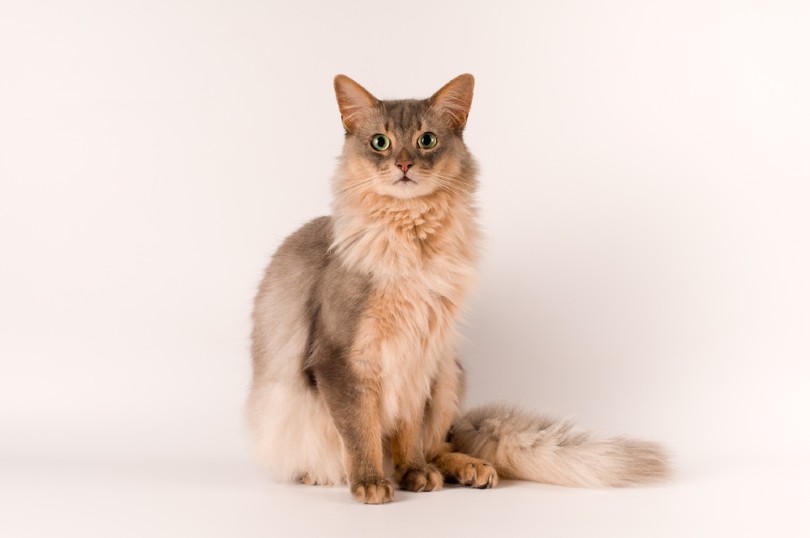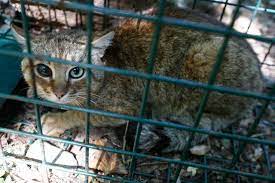Interspecific hybridization is the process of crossing two different species of animals to produce offspring that share characteristics of both parents.
For instance, lions have successfully been bred with tigers to end up with ligers.
Such hybrids have led experts into exploring other possible mixes, especially for pets.
One popular example is the labradoodle, which is a cross between a Labrador retriever and a poodle.
This mix was originally developed to create a hypoallergenic guide dog, but they quickly became popular as family pets, thanks to their friendly nature and low-shedding coat.
Another popular hybrid is the cockapoo, which is a cross between a cocker spaniel and a poodle.
Cockapoos are known for being intelligent and easy to train, making them ideal companions.
As interest in hybrids continues to grow, there is sure to be an increase in the number of available mixes in the years to come.
Can A Fox Breed With A Cat?
The answer is no. A fox cannot breed with a cat because they are not of the same species.
The two animals have different numbers of chromosomes. For example, foxes have 34-78 chromosomes while cats have only 38.
Each chromosome contains a different gene and these genes control various physical traits such as height, fur color, and ear shape.
Therefore, when two animals of different species mate, they produce offspring that have a combination of the traits controlled by the genes of each parent.
Since foxes and cats have a different number of chromosomes, they can’t create offspring that would be able to survive and reproduce.
So, while it may be possible to mate a fox with a cat, it would not result in any viable offspring.
Can A Cat Be Half Fox?
No, a cat cannot be half fox. A cat is a domesticated animal that belongs to the Felidae family, while a fox is a wild animal that belongs to the Canidae family.
Cats and foxes are two different species, and they can’t have offspring together.
In addition, cats and foxes have different physical characteristics. For example, cats have shorter snouts and legs than foxes, and their tails are shorter and furrier.
They also tend to be more vocal than foxes, with a wider range of meows, chirps, and purrs.
So, while it might be fun to imagine a half-cat, half-fox creature, it’s simply not possible.
Why Does My Kitten Look Like A Fox?

When you first lay eyes on a kitten, it’s hard not to be charmed by their cute and cuddly appearance.
However, have you ever noticed that some kittens resemble other animals, such as foxes?
One reason for this is that kittens are born with long, pointy ears. Their big ears help them to hear their mother’s voice and find their way around in the dark.
As they grow older, their ear size relative to the rest of their body will decrease and their ears will become less pointy.
Some cat breeds are also known to resemble foxes. For example, the Bengal cat is a domestic cat that was bred to have physical features that resemble those of a wild Asian leopard cat.
As a result, Bengal cats often have fur patterns that look similar to those of a fox.
The Somali cat also has a recessive gene that produces long hair and this coupled with its long ears gives it a fox-like look. Learn more here: Somali Cat: The Cat That Looks Like A Fox
So if your kittens are Bengals or Somalis, they may look like tiny foxes.
Are Foxes More Like Cats Or Dogs?
Foxes are members of the Canidae family, which includes dogs, wolves, and jackals.
However, foxes are classified as vulpines, a subgroup that consists of small canids with pointed noses and bushy tails.
In terms of size, foxes are more similar to cats than dogs. They also share some behavioral characteristics with cats, such as their ability to climb trees and their independence from humans.
For these reasons, some people consider foxes to be more like cats than dogs.
However, cats are members of the Felidae family, which includes lions, tigers, and leopards.
So, while foxes may share some characteristics with both cats and dogs, they are most closely related to dogs.
Is A Cat-Fox Real?

A cat-fox is a new wild cat breed that was recently discovered on the French island of Corsica.
The cat-fox is a small, shy creature that looks like a cross between a cat and a fox.
It has a reddish brown coat, pointy ears, and a long, bushy tail.
Even though it is a small cat, it is slightly larger than the average domestic cat.
DNA analysis has confirmed that the cat is not related to the European wildcat which was initially believed to be the parent.
Its DNA is close to the African forest cat and scientists now believe that its descendants were brought into Europe from Africa in the 18th century.
The cat-fox has adapted to its environment in some interesting ways. For example, it has developed a strong sense of smell, which helps it to avoid predators.
It also has very sharp claws, which it uses to climb trees and catch birds.
The cat-fox is however not an offspring of a fox and a cat. It was only given the name because it resembles both animals.
Because this is a newly discovered breed, there is still little information about it but scientists are still studying the cat to understand more.
Parting Thoughts
So, there you have it. A fox is not of the same species as a cat, so they cannot breed.
For two animals to breed, they need to be in the same species and have the same number of chromosomes.
But all is not lost for pet parents who desire to have a cat that resembles a fox.
Some cat breeds are known to have fox-like qualities. The first is the Somali cat which has a thick tail, pointed ears, a small head, and thick fur – just like a fox.
The other option is the Bengal which is a cat breed that was bred to resemble a small leopard.
Bengals look more like leopards but they also have some foxlike qualities.
If you go with any of these, you will not be disappointed that a fox and cat hybrid doesn’t exist because you will have your own “fox-cat” in the house.

Hi! I am Eleanor Price. I started this website after my cat, Louie, almost died from a case of botulism (a type of food poisoning often caused by bacteria that grow on food items). Turned out that my cat’s diet was the problem. I have made it my duty to provide the best information and recommendations about everything cat lovers need to know about their felines’ health and wellbeing. My goal is to find the most informative content on anything feline-related and share it with fellow hardworking kitty lovers.

